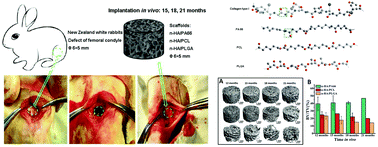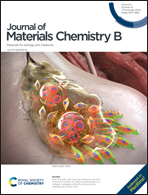The ultralong-term comparison of osteogenic behavior of three scaffolds with different matrices and degradability between one and two years
Abstract
Attributed to their structure and composition manipulated to mimic natural bone tissue, porous scaffolds composed of inorganic nano-hydroxyapatite (n-HA) and organic polymers with different degrees of degradability have been proven to be a promising bone regeneration strategy. However, long-term and in-depth comparative research on the effects of scaffolds with different matrices and degrees of degradability on bone reconstruction is still lacking. In this study, the ultralong-term osteogenic performance of three polymeric composite scaffolds based on non-degradable polyamide 66 (PA66), slowly degradable polycaprolactone (PCL) and fast degradable poly (lactic-co-glycolic acid) (PLGA) were investigated comparatively after implanting the scaffolds into rabbit femoral defects for 12, 15, 18 and 21 months. The results demonstrated that the structural integrity of the scaffolds played a positive role in long-term bone reconstruction. Thus the n-HA/PA66 and n-HA/PCL scaffolds have a higher relative bone volume and bone density than the n-HA/PLGA scaffolds from 12 to 21 months. In addition, the favorable surface wettability and collagen-like molecular structure should endow the n-HA/PA66 scaffold with the best long-term osteogenic property among the three scaffolds. The ultralong-term comparative study reveals that a relatively stable scaffold integrity, together with favorable matrix molecular characteristics and hydrophilicity, may be more important for long-term osteogenesis besides the effect of scaffold pore structure, rather than the pursuit of fast scaffold degradation. The results also show that the space left by scaffold degradation is not easily occupied by new bone tissue, especially after bone tissue has formed a stable structure or the bone interface has become inert.



 Please wait while we load your content...
Please wait while we load your content...